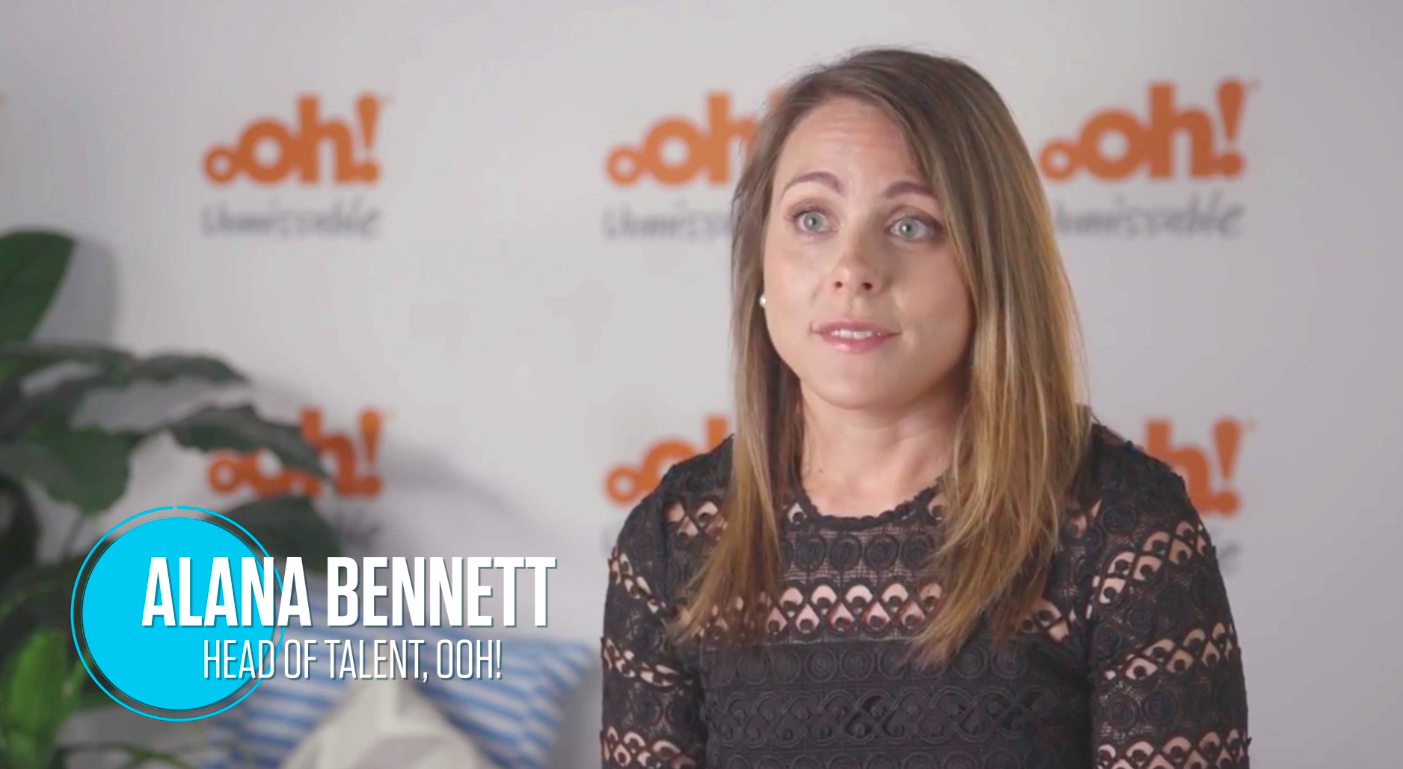
2020 has been an interesting year. Unprecedented times called for unconventional pivots from organisations that were rock solid at the beginning of the year, especially for talent acquisition teams. Perhaps the silver lining of this year is the progression towards a more modernised digital workforce that is better equipped to handle uncertainty in the future. The days have been slow but the weeks fast with many people experiencing tough challenges along the way. Unshackled mentally by the growing pains of change, we take a look back on the year for our Talent Acquisition community and take-away some valuable lessons around talent acquisition strategies, effective talent engagement, and how to market to potential candidates.
Clouds are for more than rainy days
Digital transformation for your talent acquisition team
Following the emergence of COVID-19, Microsoft CEO Satya Nadella stated, “We’ve seen two years worth of digital transformation in two months.” That statement is probably true for most thriving, adaptive organisations. To grow and succeed, organisations need to adopt technology transformation projects that enable their people to respond to rapid market changes and unlock additional human capital value. This means talent acquisition needs to be equipped with the right resources to implement their talent acquisition strategies.
Tech keeps you on top
If organisations didn’t have HR technology in place at the start of the year then they no doubt spent some time researching it over this past year to improve their hiring process. The rise of cloud-based Talent Acquisition technology has made the redirection to remote working possible for talent acquisition professionals. Cloud-based technologies enable talent acquisition professionals to find top talent, open positions for their qualified potential candidates, and fill open roles with amazing employees that fit their organisation and company culture. Companies reliant on legacy technology have found themselves without the competitive advantage as digital-first organisations rise to the top business performance with a future-proof talent acquisition strategy. According to the 2020 Gartner CEO survey, technology is seen as pivotal to recovery and growth in 2021 with 65% of CEO’s stating the crisis had accelerated their digital transformations. Talent acquisition, as stewards of a businesses’ biggest asset – their people – benefit from digital upgrades in a tactic to remain cutting edge while lowering existing recruitment costs and hiring top talent.
Interviews from the comfort of your home
Evolution can happen quickly
With many people directed to work from home this year, it has taken months to do what years of workplace evolution would have. In January this year, many people thought Zoom was a feature on their camera – not the household name that it is today. Working from home has meant we are relying on technology now more than ever to communicate. For the Talent Acquisition community, veering into video interviewing became a necessity. It quickly evolved from a handy tool to a must-have for teams that urgently needed candidates in open positions to be screened and onboarded remotely.
Integrate to propagate
Integrations with top technology providers to deliver video interviews from within recruitment technology makes the screening process seamless for talent acquisition teams. Clients such as oOh!media attribute their low time-to-hire to the partnership between their talent technology and their video interviewing software. The integrations for their talent acquisition team meant they were able to streamline their recruitment process. There are clear advantages to shortlisting candidates using video interviewing – this makes it a talent acquisition strategy that is here to stay.
Impart purpose from afar
Due to lockdowns, many new hires were onboarded remotely this year. IT departments couriered equipment to homes and virtual meetings were the norm from day one. The HR department in organisations became conscious of the need to support employee wellbeing during remote work. Employee experience came into focus for organisations who were keen to retain company culture and support employee challenges brought on by unforeseen circumstances. Employee engagement became top of mind as executive teams grappled with innovative ways to manage a disenfranchised workforce.
Enabling employee communication
Technology has now become the enabler for distributing communication to employees in an engaging way to keep them connected to organisational purpose. A dedicated onboarding platform to drive employee engagement from the offer process through the entire employee lifecycle has become part of the integrated tech stack for Human Resources teams; particularly those in talent acquisition who that have been bogged down by repetitive administrative tasks beginning at the recruitment stage. Workforces that are more engaged enjoy up to 21% higher profits – making it good business, not just nice to have. Companies that have invested in their hiring, employee, and onboarding process will be well-grounded to face any challenges ahead with engaged and high-performing employees.
Future-proofing through talent mobility
Change requires dynamic adaptation
Suppose we had known what this year had in store for us. Organisations stood down employees overnight as entire industries came to a halt. Uncertainty led to redundancies, while other industries went into overdrive in the search for talent. Enterprise companies collaborated with much-needed sectors to repurpose thousands of employees. Industries pivoted to entirely different business models and employee positions with it. Talent mobility technology is in the limelight on the back of key business changes. Giving talent acquisition the ability to quickly move talent around the organisation is a critical need to address.
Talent Acquisition vs COVID-19 Case studies
The Queensland Government needed to redeploy hundreds of staff to areas of the greatest need during the COVID-19 crisis. The lack of visibility into talent and skills across 48 agencies stifled mobilisation until Talent Mobility software mapped skills, agency, work type and pay grade across departments. With intelligent matching of talent and skills they were able to redeploy over 450 employees across COVID-19 response roles with an average time-to-hire of 14 days. Internal mobility has proven to be an effective and necessary talent strategy.
Similarly, Vodafone’s agile approach with the redistribution of retail staff to contact centre teams during the lockdown of offshore call centres meant people decisions needed to be made fast. Total talent visibility makes it possible for organisations to team up talent acquisition, hiring managers, and the HR department to build pools of talent and fill critical roles with a seamless recruitment process.
Expect the unexpected
Innovate and communicate
The realisation has dawned of how vital it is to prepare for the unknown. Employers that needed to stand down employees initially looked for ways to communicate and preserve engagement with employees to allow talent acquisition to be ready when they needed to commence trading again. Companies that developed or already had an alumni community to pool talent from have been steadfast in their recovery.
No slowing down the talent acquisition strategy
Macro-environment influences will continue to affect businesses and governments in the coming years. Organisations who adapt to these changes can weather the storm more easily if they have access to tools that assist in managing the fluidity required. Often human resources aren’t aware of the value of talent mobility in the talent acquisition process until they need it. Investing in systems now that enable you to forward plan means that you are prepared for the future – even in uncertain times.
Employer branding: the road to recovery
Reputation is everything
Employer branding has evolved in the last five years from a buzz word to solid strategy. It is now an essential recovery tactic for all employers as we move towards a post-COVID normal. Talent acquisition professionals on the front line of recruiting know it’s not a set and forget task – and even more so because of the pandemic. According to HBR, the top three factors that lead to bad employer reputation are concerns about job security, dysfunctional teams and poor leadership. The costs can increase as much as 10% per hire in additional wages to combat the poor reputation. Statistics show up to 50% of people wouldn’t even consider a role with a company with a poor reputation. This hesitation in applying affects the quality of talent a company attracts and directly impacts organisational performance.
It’s not what you do, it’s how you do it
Unusual circumstances this year like widespread redundancies and workforce changes are not the cause of reputational damage though. Just look at how companies like Airbnb advised the redundancy of 25% of their workforce back in May. Employer branding is more about the execution of actions rather than the activities themselves. Perhaps that is something organisations can learn from as they begin sourcing or re-engaging talent in the future.
Leverage data insights to drive diversity
Many HR departments are flying blind, with no visibility over their existing or future talent. Leveraging analytics to drive “people change” and company hiring needs might make sense but do your executives support you in acquiring the technology to do so?
Perhaps the focus on minimising hiring costs or moving towards a digital transformation has given your key stakeholders reason to invest in a total talent solution. The benefits of real-time data, reporting and analytics aligned to your organisational needs are often the very resource that stakeholders have turned to this year to make crucial decisions. Aligning talent mapping with Talent Pooling means you can proactively engage with candidates for future roles by identifying well-fitted individuals and succession planning for internal employee development.
Building a diverse talent community
Organisations that prioritise diversity and inclusion targets can leverage intuitive talent acquisition technology to match positions with suitable candidates while avoiding unconscious bias. According to LiveHire data, leveraging a Talent Community is one way you can improve gender diversity targets by attracting more female candidates early in the process. With women 15% more likely to accept a job invite in male-dominated industries, it presents an easy solution for sectors that are seeking to attract more female talent.
There is a solid business case for neurodiversity in the workplace too. Diversity and inclusion in the workplace creates a divergence of thought that is needed now more than ever. This untapped talent pool represents a competitive advantage for businesses that have the resources to recognise talent that is under-represented with traditional recruitment models. Accessing alternative perspectives often go hand-in-hand with innovative contributions – something that companies need as they emerge from 2020.
Acquiring candidates beyond a commutable radius
There’s no going back now for talent acquisition. A staggered return to the office has yet to inspire employees who have realised they are capable of doing their work from home – or any other location. The sudden appearance of REMOTE as a location selection in job search tools has been a lightbulb moment for companies eager to access quality talent. Talent acquisition professionals have realised with smart technology they can screen, interview and onboard a candidate anywhere in the world. Some executives have come to terms with the benefits of opening up your applicant pool to candidates with a broader location radius that is likely to yield a better Talent Pool .
According to the 2019 IWG workforce survey, 83% of global respondents have reported that the ability to work flexibly (at least some of the time) would make or break their decision in a job offer. If this was the current sentiment before COVID-19, then it is clear that a flexible working policy is now a must-have in any EVP to remain competitive. However, flexible working can mean different things to different people – residing city, office location, hours or autonomy over workload. For many candidates, it is rapidly becoming a non-negotiable in job searches. It’s reasonable to deduct that for many businesses, it could capture top talent that they might otherwise miss out on.



